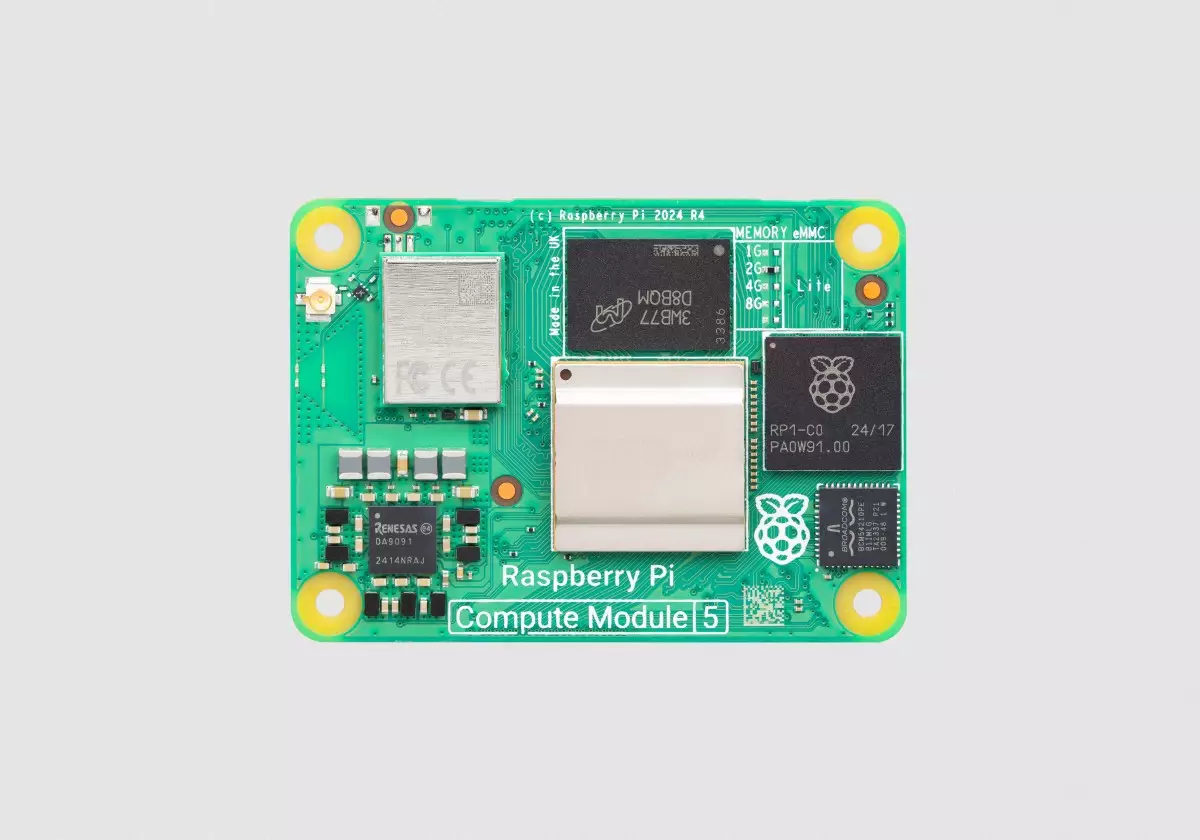Raspberry Pi has solidified its reputation as a leader in compact computing, largely due to its user-friendly single-board computers (SBCs) that cater to a variety of applications. With the buzz surrounding the Raspberry Pi 5, released in September 2023, the focus on accessibility in both educational and tech-savvy arenas has never been sharper. These devices are not merely hardware; they are gateways to creativity and innovation for enthusiasts and educators. However, with the launch of the Compute Module 5, Raspberry Pi is branching out into more specialized and compact territories.
The Compute Module 5 represents an exciting evolution of Raspberry Pi’s product line. Unlike its SBC counterparts, which are equipped with multiple external ports, this new module leans heavily into the embedded systems market. The absence of traditional ports makes the Compute Module 5 more suitable for integration into diverse products, offering a streamlined solution for developers and businesses alike. The emphasis on compactness and efficiency is particularly appealing in an era where space-saving technology has become a necessity in many industrial applications.
Starting at an attractive price point of $45, the Compute Module 5 shares core specifications with the Raspberry Pi 5, incorporating a robust quad-core Arm Cortex-A76 processor. This powerful engine allows it to seamlessly support dual 4K displays at 60Hz, alongside modern connectivity options such as Gigabit Ethernet, Wi-Fi, and Bluetooth. Such features enable developers to create sophisticated applications ranging from interactive dashboards to home automation systems.
Raspberry Pi has taken user customization to new heights, offering various configurations of the Compute Module. Users can select from different RAM options—2GB, 4GB, or 8GB—and choose between models with or without integrated wireless technology. The storage capacities also vary significantly, expanding up to an impressive 64GB of on-board flash storage. With the highest specification model priced at $95, Raspberry Pi caters to a wide spectrum of market needs, from educational purposes to complex industrial applications.
In addition to its base features, Raspberry Pi has introduced optional accessories to complement the Compute Module 5. For instance, the passive heatsink priced at $5 serves as a crucial addition, enhancing performance by ensuring the hardware remains cool during rigorous tasks. Moreover, the dedicated IO board available for $20 not only grants users full access to the Compute Module’s interfaces but also simplifies the development process, making it easier to transform ideas into tangible products.
Furthermore, the ability to encapsulate the Compute Module 5 in a protective metal case for desktop computing opens a new dimension in usability. This development signifies Raspberry Pi’s commitment to creating robust, multi-functional devices that can be utilized in various environments—whether at home, in an office, or within an embedded system.
As the Raspberry Pi ecosystem continues to evolve, anticipation grows regarding the potential updates to the beloved Raspberry Pi 400. This device, which essentially blends a keyboard with a Raspberry Pi 4 computer, embodies a charming aesthetic while delivering strong performance. The future of Raspberry Pi products seems geared toward further simplifying technology for users while expanding its utility across various industries.
With the Compute Module 5 and its versatile options, Raspberry Pi remains steadfast in its mission to empower individuals and businesses through accessible and innovative computing solutions. This latest offering not only enhances the functionality of computing technology but also fuels creative potential across multiple sectors.

